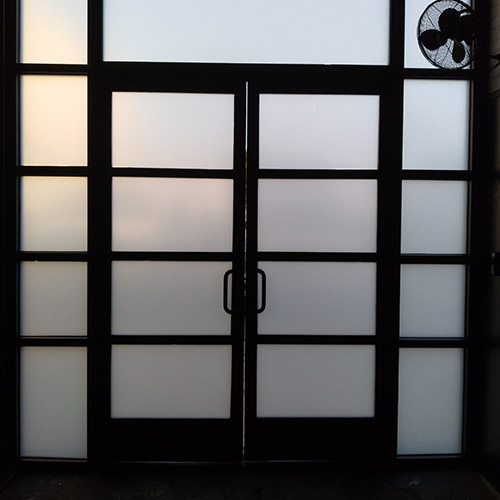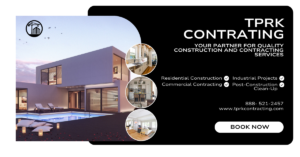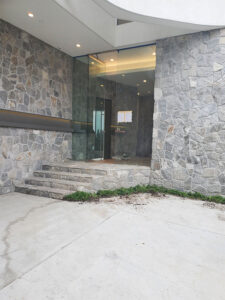In today’s architecture and interior design, glass has become one of the most coveted materials. Its timeless elegance, practicality, and versatility make it a preferred choice for architects, designers, and homeowners alike. From stunning skyscrapers to cozy homes, glass plays a crucial role in shaping modern environments. But what makes glass so special? Let’s dive into its many benefits and applications in contemporary design.
Aesthetic Appeal and Transparency
One of the most attractive qualities of glass is its ability to create openness and light. Transparent and reflective, glass allows natural light to flow freely through spaces, brightening interiors and creating an illusion of more space. This is especially useful in urban environments, where maximizing light and space is essential.
Whether used for large windows, glass walls, or partitions, glass enhances visual connectivity. It brings the outside in, connecting people with nature and surrounding views, giving homes and offices a fresh, airy feel. The sense of openness created by glass makes any space feel more inviting and connected to the world outside.
Versatility in Design
Glass is a versatile material that can be used in an endless variety of ways, from structural components to decorative elements. Some popular applications include:
- Windows and Skylights
Windows are the most traditional use of glass, but in modern design, they go beyond mere functionality. Floor-to-ceiling windows or panoramic glass walls bring breathtaking views into focus and blur the lines between indoors and outdoors. Skylights are another great way to introduce natural light, enhancing the ambiance of living spaces while saving energy. - Glass Railings and Balconies
For a sleek and contemporary look, glass railings are an excellent choice. Commonly used in staircases, balconies, and terraces, they provide safety without obstructing views. Frameless glass railings, in particular, offer an ultra-modern aesthetic that’s both chic and functional. - Shower Enclosures and Bathroom Design
In bathroom design, glass is synonymous with luxury. Frameless shower enclosures give bathrooms a clean, modern look while making the space feel more open. Frosted or textured glass can also add privacy without sacrificing style. - Glass Doors and Partitions
Interior glass partitions and doors create a seamless flow between rooms, allowing light to travel while offering privacy where needed. They’re a popular choice in offices, as they divide spaces without the heaviness of traditional walls, fostering collaboration and openness. - Glass Furniture and Accessories
Glass furniture, such as tables, shelves, and even light fixtures, brings a minimalist and sophisticated touch to interior spaces. These pieces often feel lighter than wooden or metal counterparts and can complement a variety of decor styles. - Structural Glass
Architectural innovations have made it possible for glass to play a structural role in buildings. Today, entire facades, roofs, and even staircases can be made out of glass, creating buildings that look futuristic and feel light-filled. Structural glass is tempered and laminated for strength and durability, offering both safety and visual impact.
Energy Efficiency
Beyond aesthetics, glass also has a functional side. Modern advancements in glass manufacturing have resulted in energy-efficient options, like double-glazed or low-emissivity (low-E) glass, which reduce heat loss and minimize UV rays entering the building. This results in better temperature control and lower energy costs for heating and cooling.
Double-glazed glass, for instance, provides excellent insulation by trapping air or inert gas between two glass panes, reducing heat transfer. Low-E glass, on the other hand, has a special coating that reflects heat while still allowing natural light to filter in. These features make glass an eco-friendly material choice for both residential and commercial buildings.
Strength and Durability
Gone are the days when glass was considered fragile and unsafe. Today’s glass products are stronger and more resilient than ever. Tempered glass, commonly used for doors, windows, and shower enclosures, is four to five times stronger than regular glass and is designed to shatter into small, harmless pieces upon impact. Laminated glass, made by sandwiching a layer of plastic between two sheets of glass, adds another layer of security by holding the glass together even when broken.
For exterior applications, these toughened glass types ensure durability while maintaining the elegance that glass brings to a structure.
Sustainable and Recyclable
Glass is one of the most sustainable building materials available. It is made from natural, abundant raw materials like sand, soda ash, and limestone, and is 100% recyclable. Recycled glass, also known as cullet, can be reused in new glass products without losing quality, making it a key player in sustainable construction practices.
By incorporating recycled glass into building projects, architects and builders are reducing the carbon footprint of their designs and contributing to a more circular economy.
Conclusion
Glass is much more than just a transparent surface. It’s a versatile, beautiful, and eco-friendly material that continues to shape the way we design our spaces. Whether it’s enhancing natural light, offering structural support, or providing energy-efficient solutions, glass remains an essential element of modern architecture and design.
As innovations in glass technology continue to evolve, we can only expect to see even more creative and groundbreaking uses for this material. From sleek modern homes to towering skyscrapers, glass will always play a vital role in shaping our built environment, combining elegance with practicality like no other material can.
For more ideas and inspiration on how to incorporate glass into your next project, explore the latest trends in architectural glass and discover the endless possibilities that this extraordinary material offers.




